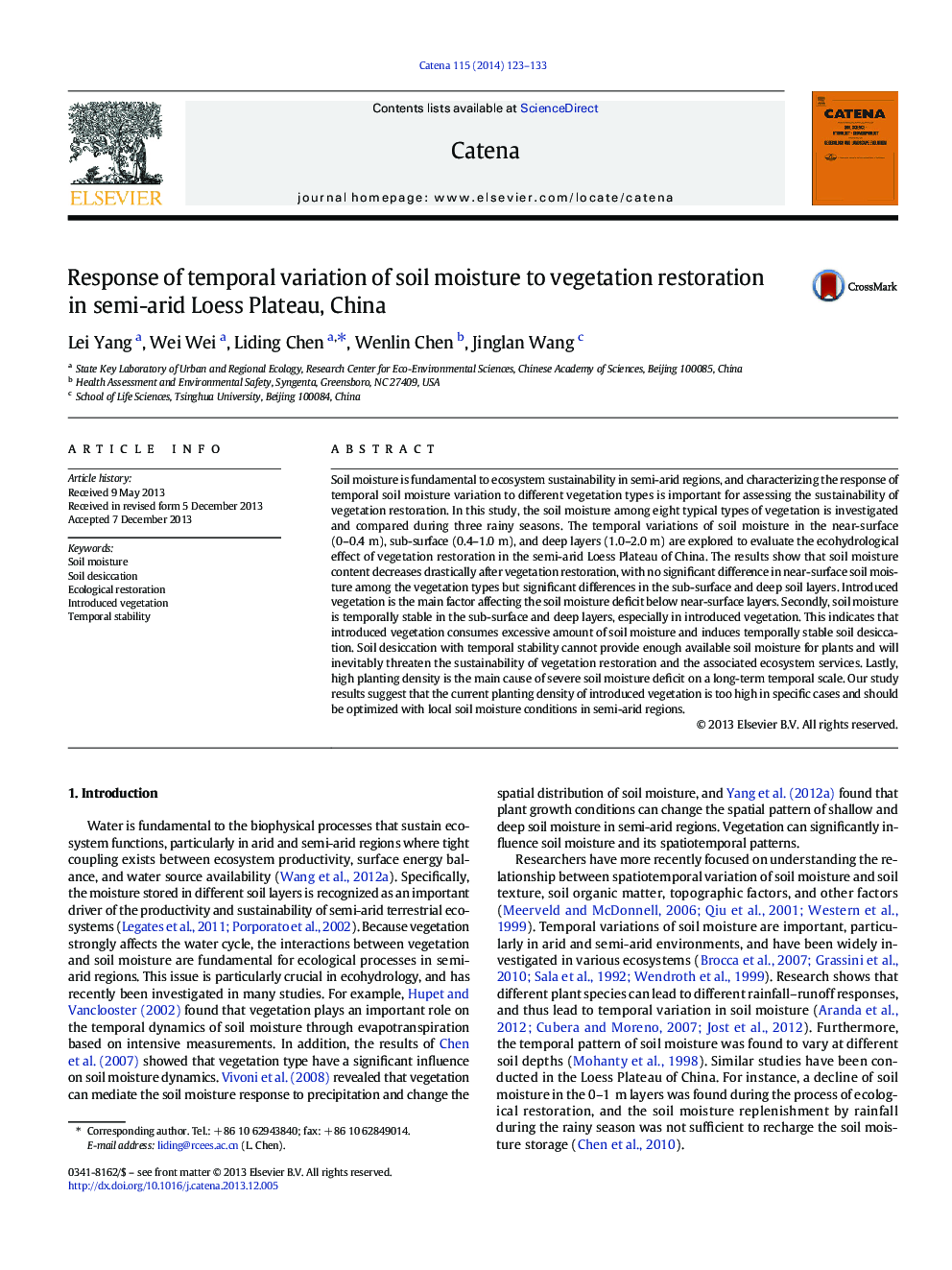| کد مقاله | کد نشریه | سال انتشار | مقاله انگلیسی | نسخه تمام متن |
|---|---|---|---|---|
| 6408103 | 1629237 | 2014 | 11 صفحه PDF | دانلود رایگان |
- Temporal variations of soil moisture in different vegetations were compared.
- Introduced vegetation consumes soil moisture excessively.
- Introduced vegetation induced temporally stable soil desiccation.
- High planting density is main reason for soil moisture deficit.
Soil moisture is fundamental to ecosystem sustainability in semi-arid regions, and characterizing the response of temporal soil moisture variation to different vegetation types is important for assessing the sustainability of vegetation restoration. In this study, the soil moisture among eight typical types of vegetation is investigated and compared during three rainy seasons. The temporal variations of soil moisture in the near-surface (0-0.4Â m), sub-surface (0.4-1.0Â m), and deep layers (1.0-2.0Â m) are explored to evaluate the ecohydrological effect of vegetation restoration in the semi-arid Loess Plateau of China. The results show that soil moisture content decreases drastically after vegetation restoration, with no significant difference in near-surface soil moisture among the vegetation types but significant differences in the sub-surface and deep soil layers. Introduced vegetation is the main factor affecting the soil moisture deficit below near-surface layers. Secondly, soil moisture is temporally stable in the sub-surface and deep layers, especially in introduced vegetation. This indicates that introduced vegetation consumes excessive amount of soil moisture and induces temporally stable soil desiccation. Soil desiccation with temporal stability cannot provide enough available soil moisture for plants and will inevitably threaten the sustainability of vegetation restoration and the associated ecosystem services. Lastly, high planting density is the main cause of severe soil moisture deficit on a long-term temporal scale. Our study results suggest that the current planting density of introduced vegetation is too high in specific cases and should be optimized with local soil moisture conditions in semi-arid regions.
Journal: CATENA - Volume 115, April 2014, Pages 123-133
